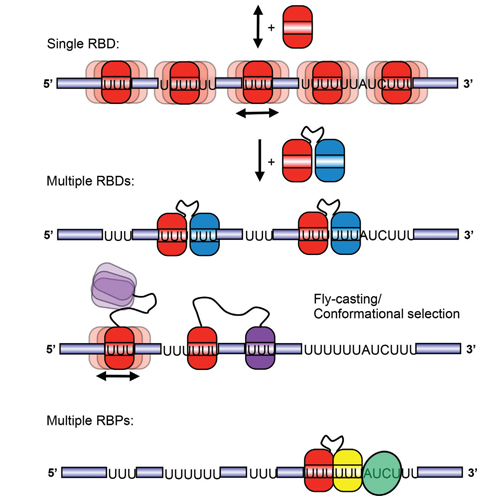Deciphering the protein-RNA recognition code: Combining large-scale quantitative methods with structural biology
08-Jun-2015
RNA binding proteins (RBPs) are key factors for the regulation of gene expression by binding to cis elements, i.e. short sequence motifs in RNAs. Recent studies demonstrate that cooperative binding of multiple RBPs is important for the sequence-specific recognition of RNA and thereby enables the regulation of diverse biological activities by a limited set of RBPs. Cross-linking immuno-precipitation (CLIP) and other recently developed high-throughput methods provide comprehensive, genome-wide maps of protein-RNA interactions in the cell. Structural biology gives detailed insights into molecular mechanisms and principles of RNA recognition by RBPs, but has so far focused on single RNA binding proteins and often on single RNA binding domains. The combination of high-throughput methods and detailed structural biology studies is expected to greatly advance our understanding of the code for protein-RNA recognition in gene regulation, as we review in this article.











